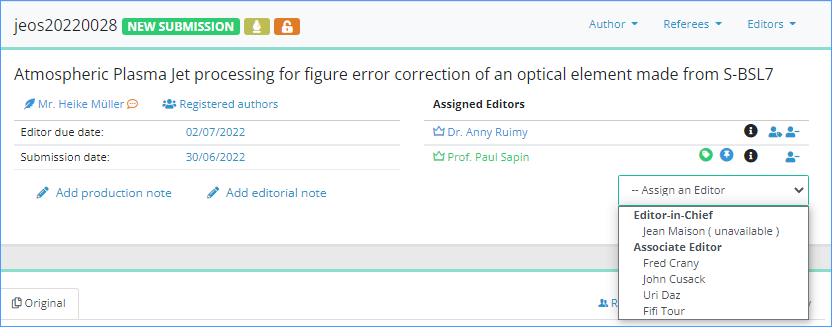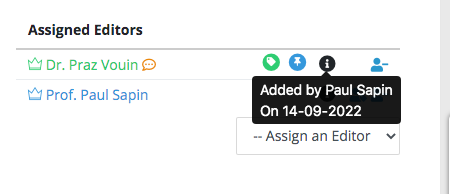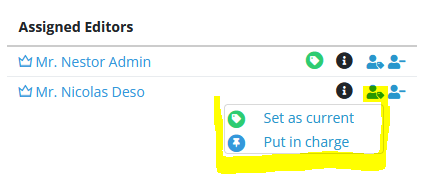Assigning editors
If you are an Editor-in-Chief, you will likely assign articles to other editors (e.g. Associate Editors, Guest Editors, etc.). Click on the ‘Assign an Editor’ menu and select the editor you want to assign. This opens the confirmation window, proposing you assignment e-mails:
|
Once your
|
Additionally:
- if the article status was "Awaiting assignment"
- --> status changes to "New submission"
finally,if the assigned editormayhasgetathechargeable profile- -->Nestor will also consider him as "editor in
charge"charge",tagwhich impacts his personal dashboard
- -->Nestor will also consider him as "editor in
Current editor & editor in charge
WhenIn an editor is assigned to anthe article:
Nestor automatically assumes this editor is responsible to move the editorial process forward:the editor is now consideredThe "current editor", andis highlighted with a green badgeAdditionally, if this editor has a scientific profile: Nestor will consider him asThe "editor in charge", andis highlighted with a blue badge
Most of the time, an editor is both "current" and "in charge". DNote thatepending on your workflow, this can change later on in the process. Typically, at the acceptance stage:
- the scientific editor will remain in charge
- and a copy editor gets assigned, and is now "current"
AfterIf assignment,necessary, editor'seditorial responsibility may be easily corrected with these tools:




